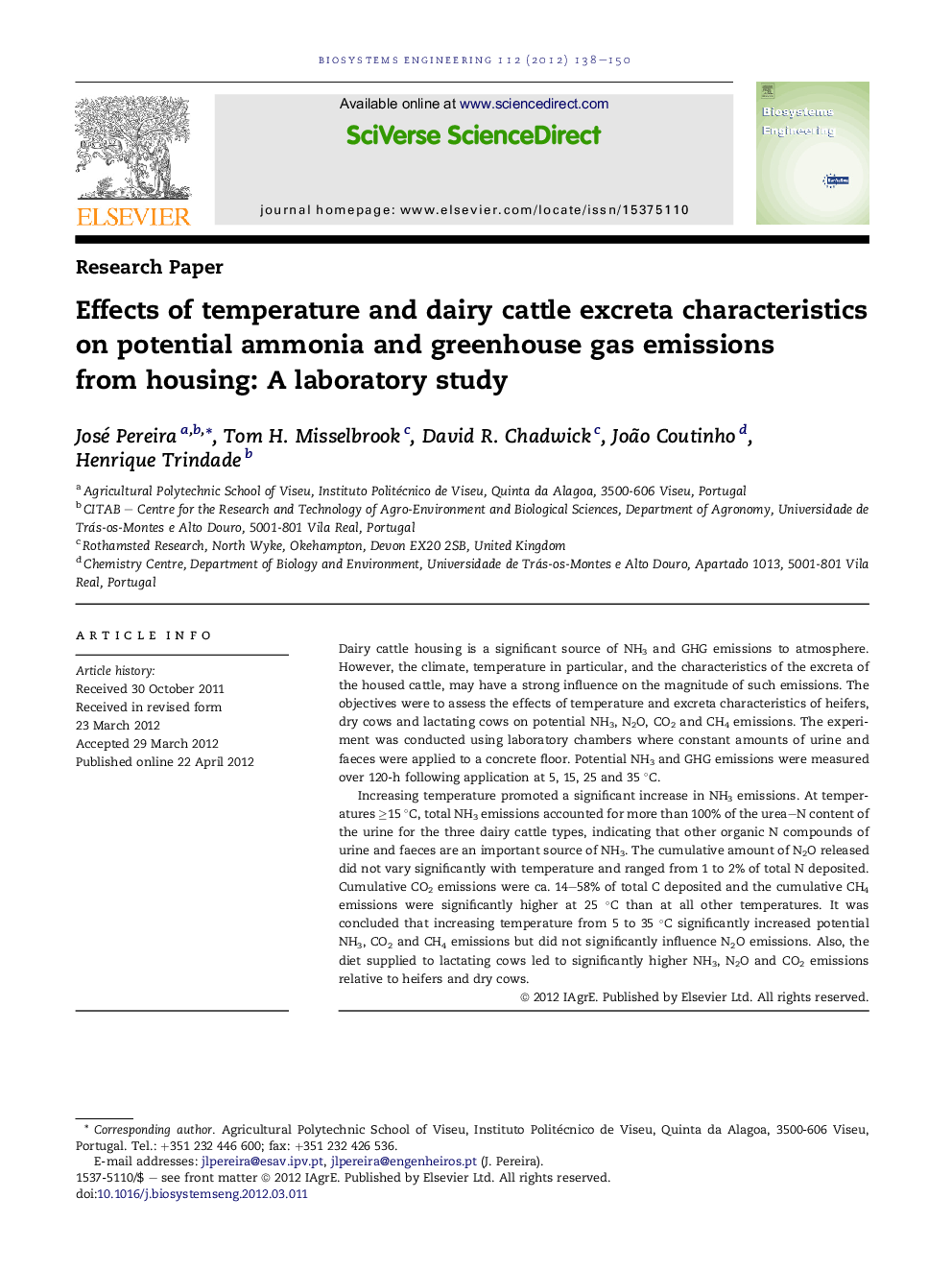| Article ID | Journal | Published Year | Pages | File Type |
|---|---|---|---|---|
| 1711542 | Biosystems Engineering | 2012 | 13 Pages |
Dairy cattle housing is a significant source of NH3 and GHG emissions to atmosphere. However, the climate, temperature in particular, and the characteristics of the excreta of the housed cattle, may have a strong influence on the magnitude of such emissions. The objectives were to assess the effects of temperature and excreta characteristics of heifers, dry cows and lactating cows on potential NH3, N2O, CO2 and CH4 emissions. The experiment was conducted using laboratory chambers where constant amounts of urine and faeces were applied to a concrete floor. Potential NH3 and GHG emissions were measured over 120-h following application at 5, 15, 25 and 35 °C.Increasing temperature promoted a significant increase in NH3 emissions. At temperatures ≥15 °C, total NH3 emissions accounted for more than 100% of the urea–N content of the urine for the three dairy cattle types, indicating that other organic N compounds of urine and faeces are an important source of NH3. The cumulative amount of N2O released did not vary significantly with temperature and ranged from 1 to 2% of total N deposited. Cumulative CO2 emissions were ca. 14–58% of total C deposited and the cumulative CH4 emissions were significantly higher at 25 °C than at all other temperatures. It was concluded that increasing temperature from 5 to 35 °C significantly increased potential NH3, CO2 and CH4 emissions but did not significantly influence N2O emissions. Also, the diet supplied to lactating cows led to significantly higher NH3, N2O and CO2 emissions relative to heifers and dry cows.
► The effects of temperature and dairy cattle excreta characteristics on potential gaseous emissions were evaluated. ► Temperature (5–35 °C) had a significant positive effect on NH3 and GHG emissions. ► Organic N compounds other than urea were also responsible for NH3 emission. ► Differences in excreta characteristics of dairy cattle had more effect on N2O emissions. ► NH3 emissions from concrete floors will be particularly important in hotter climate areas.
